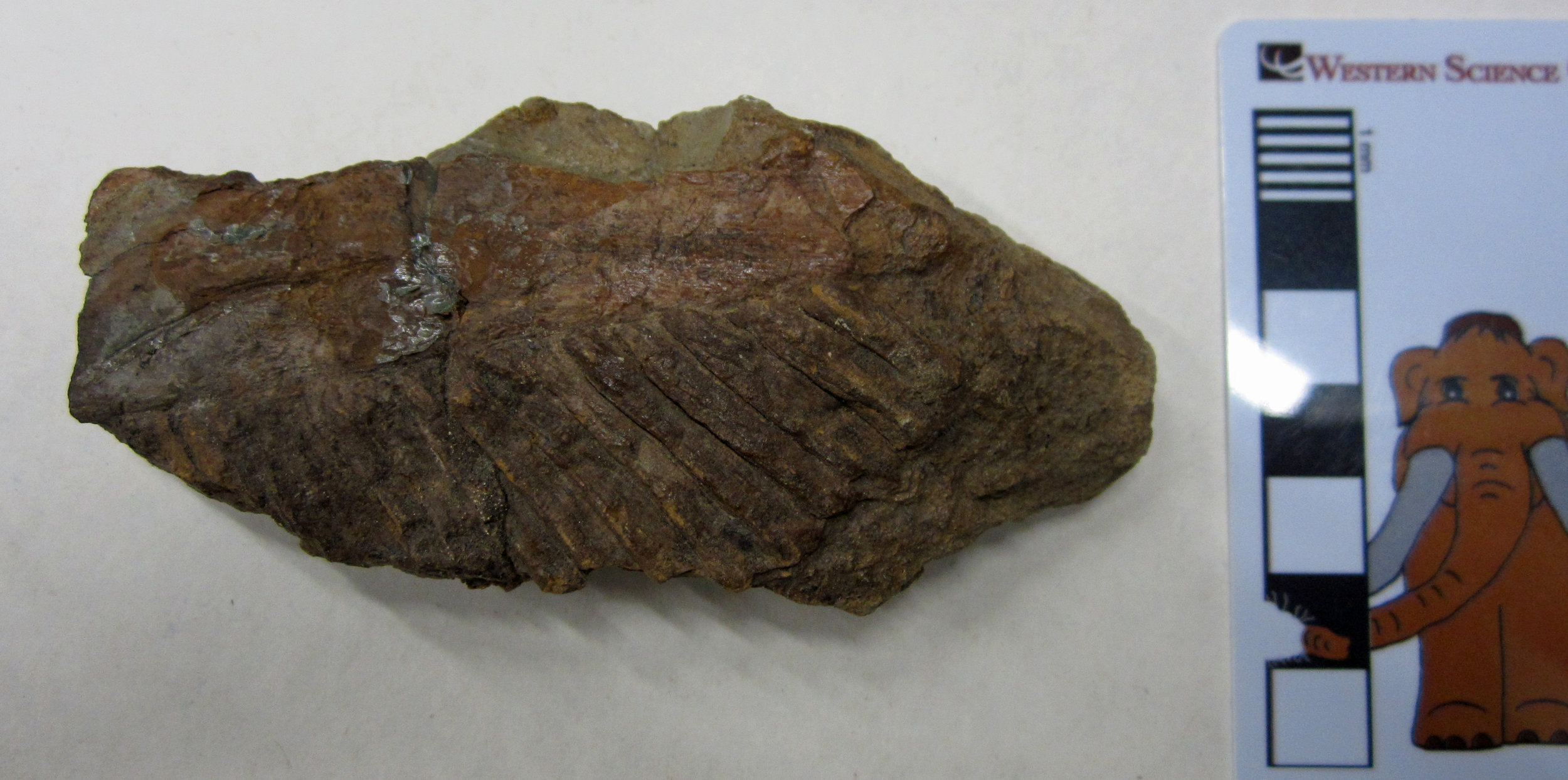 The fossilized bones of dinosaurs and other prehistoric animals certainly hog the spotlight, and they are spectacular. But alongside the bones of giants such as Tyrannosaurus is a very different, much more abundant type of fossil: ancient plants. Paleobotany, the study of fossil plants, is a vital part of understanding Earth history. Fossil plants provide data on bygone environments, ecology, and climate.This fossil is the impression of a 67-million-year-old palm leaf. It was found in the Hell Creek Formation of Montana by local fossil hunter Harley Garbani and donated to the Western Science Center by his wife, Mary. The living plant probably looked much like modern palm trees, and points to a much warmer climate in Montana during the Late Cretaceous Epoch than today. Next time you see a living palm tree swaying in the breeze, imagine a T. rex under it seeking shade from the midday sun. Post by Curator Dr. Andrew McDonald
The fossilized bones of dinosaurs and other prehistoric animals certainly hog the spotlight, and they are spectacular. But alongside the bones of giants such as Tyrannosaurus is a very different, much more abundant type of fossil: ancient plants. Paleobotany, the study of fossil plants, is a vital part of understanding Earth history. Fossil plants provide data on bygone environments, ecology, and climate.This fossil is the impression of a 67-million-year-old palm leaf. It was found in the Hell Creek Formation of Montana by local fossil hunter Harley Garbani and donated to the Western Science Center by his wife, Mary. The living plant probably looked much like modern palm trees, and points to a much warmer climate in Montana during the Late Cretaceous Epoch than today. Next time you see a living palm tree swaying in the breeze, imagine a T. rex under it seeking shade from the midday sun. Post by Curator Dr. Andrew McDonald
